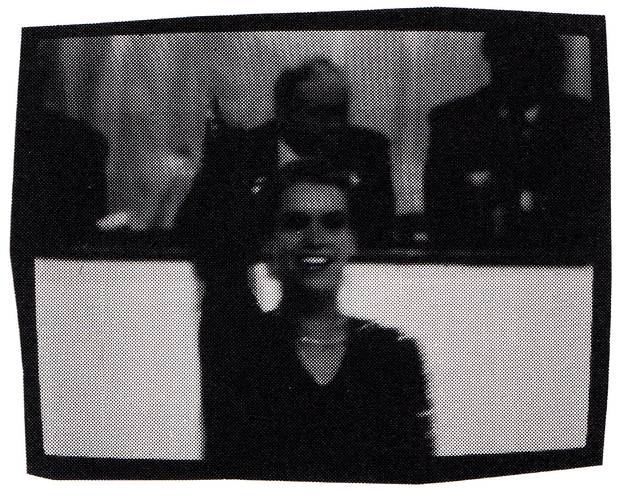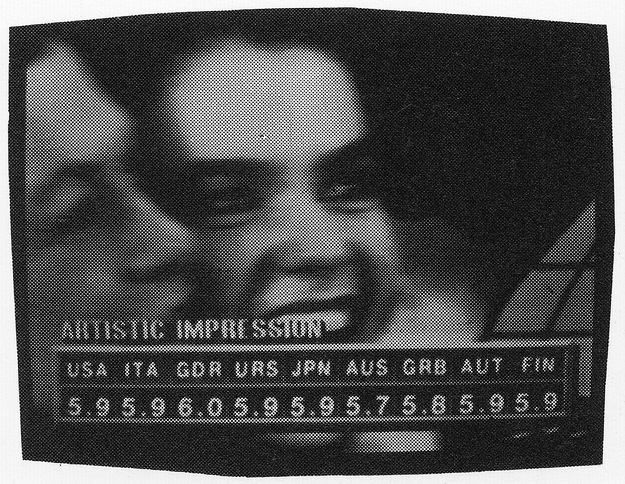Its generally agreed in ice dance circles that there's something basically unfair about KATARINA WITT and her success. While she is currently the undisputed Queen of the Ice (holding the European, International and Olympic titles); her style, performance and sheer charisma sit uneasily next to those of her rivals and only her recent retirement from the amateur circuit has stifled a rising tide of confused complaint from other competitors and trainers.
Ice dance in general is something of a peculiar hybrid, a quasi-sport, part gymnastics, part ballet, part ballroom dancing; a pursuit which has little in common with the high jump, pole vault or 100 meters sprint. But even within this netherworld of showbiz and athletics WITT has transgressed. By simply playing the game better and taking it to its logical conclusion in the media saturated late Eighties she has effectively exposed those key elements which have been traditionally obscured by the pseudo-science of its rules and numerical marking system (its precise decimal point calculations of performer's artistic expression being untenable to the point of absurdity).
Prior to the 1980s Ice Dance was a minority interest sport performed within strict guidelines of technical accomplishment and a narrowly defined range of movements and gestures characterized as artistic interpretation. The success of the British pair skaters JANE TORVILL and CHRISTOPHER DEAN in the mid 1980s brought mass publicity to the form through the High Cultural kitsch of their performance of pieces such as RAVEL's Bolero. In their wake, figure· skating shook off its minority interest tag and became popular TV entertainment with LWT (Britain's most lowbrow TV channel) even commissioning them to do a new 'Ice Ballet', Fire and Ice as a highlight of their Christmas '87 schedule. Their distinctive style shook up pairs skating internationally and brought about its own perestroika with the flowering of Russian duos such as BESTIENOVA and BLOKHIN in their wake.

Shameless Manipulation
But even in the post TORVILL and DEAN ice age, WITT is something apart. Even before this year's Calgary Winter Olympics had started there were complaints from other competitors that the judges had effectively pencilled in WITT as winner before a single contestant had set foot on the ice. Central to her competitors' grievances was what they perceived as WITT's shameless manipulation of glamour. As anyone even familiar with ice dance will know, any such allegation is rich in irony, sexually differentiated costume styles being key elements the sport's spectator appeal; but it is WITT's specific approach which marks her out.
Sexuality has always been a feature in ice dance costume (women traditionally wearing skin tone tights, men in various approximations of formal attire), but WITT's innovation has been to play the game by different rules. Instead of relying on the prim dress coding conventions of traditional Ice Dance (Prom Queen, Cheerleader or Ballroom glitz); her costumes draw on styles featured in Hollywood Cinema, Pop Music, Pop Music Videos and general upmarket fashion. Over the last eighteen months her outfits have ranged from the thigh-high basques popularized by MADONNA through to the Voguesque re-born Romanticism of her costume for the final routine at the 1987 European Championships. Added to this her rink-side interviews have been conducted fur-clad and immaculately made up oozing movie star glamour rather than dedicated amateur athletic prowess.
All this reflects WITT's knowledge and skill in realizing that (at the top level at least), contemporary Ice Dance is above all a creation for the small screen - a television form first, an actual live event second. International ice dance can no longer be said to exist in itself as something which is subsequently covered by the media, its actual ice performances and now increasingly blurred by their relay via television. Though the competition judges watch in real space their perceptions are increasingly informed by the media representations of their object of scrutiny. WITT's innovatory skill, her secret subterfuge, is her realization that even though the rink is the real space arena for performance this is coded and overlaid by the camera's perception and recognition of performer's gestures and expressions. Premising her performance on camera consciousness WITT scores with consummate ease. The camera craves its close-ups of her as she reciprocally poses, poises, gestures and most importantly smiles for it - to use an old style phrase once employed to describe the photogeneity of Hollywood stars such as MARILYN MONROE the camera loves her.
Ironic Self-Delight
All these subtleties of performance are of courses largely unreadable by the real ringside viewer, but her performance as captured on camera on previous occasions has the effect of subliminally preconditioning the audience and judges to being aware that her performance includes elements and subtleties they cannot directly perceive without the aid of the camera close-up. One technique in particular both illustrates her consummate media skill and promises millions in movie contracts; a look up from lowered lashes into a distant camera she knows is on close-up as she flashes a movie star smile perfect for freeze frame. The finals of the women's skating at the 1988 Calgary competition provided a classic confirmation of victory of camera charisma over athleticism when Japanese skater AROKE turned in a stunning athletic performance which still resulted in her trailing third in the overall ratings (WITT's technically unadventurous work-outs winning on the strength of their artistic interpretation ...) As if both aknowledging her influences and smoothing her passage from ice to celluloid, WITT finally came out in the open in her post-competition performance at the 1988 Calgary Gala. Donning a rhinestone studded leather jacket, she elicited gasps of delight and disbelief from her audience by performing a sublime ice-dance version of MICHAEL JACKSON's Bad whose hyper-stylisation owed more to high fashion styling and media art than any traditionally interpretative ice-dance homage. Her posture, facial expression and actual moves communicated the same knowingness as the most accomplished manipulators of female iconography in contemporary Pop videos (e.g. BRENDA CARLISLE in I Get Weak, MADONNA in the batch of videos she produced in 1986-87) and produced an interpretative performance which avoided the blankness of pastiche by being wrapped in ironic self-delight.
Along with being screen-smart WITT has shown a singular astuteness in her choice of career moves. A voiding the trap of an instant rush for American screen stardom, she has retired from competitive skating to study drama in East Germany before moving into cinema. This move should both buy time and avoid her falling into the trap of gradual pigeon-holed obscurity which befell her Swedish predecessor SONJA HENJE (who went to Hollywood as world champion skater and ended up in a dull cycle of skate movies). But Although WITT undoubtedly has a visual charisma based on her appearance and brilliant articulation of gesture (qualities well suited for success in the close-up medium of Cinema) it is questionable whether her acting in-role will match her visual presence - if Cinema were still silent she'd be another GISH or GARBO, but as it is her ice perfection stands complete, her competitors can sigh their relief at her retirement and those whose set their VCRS have precious irreplaceable minutes of screen-charm for their personal archives.
If you'd like to quote something: Hayward, Philip. "Ice Dance and Screen Charm." Mediamatic Magazine vol. 3 # 1 (1988).
